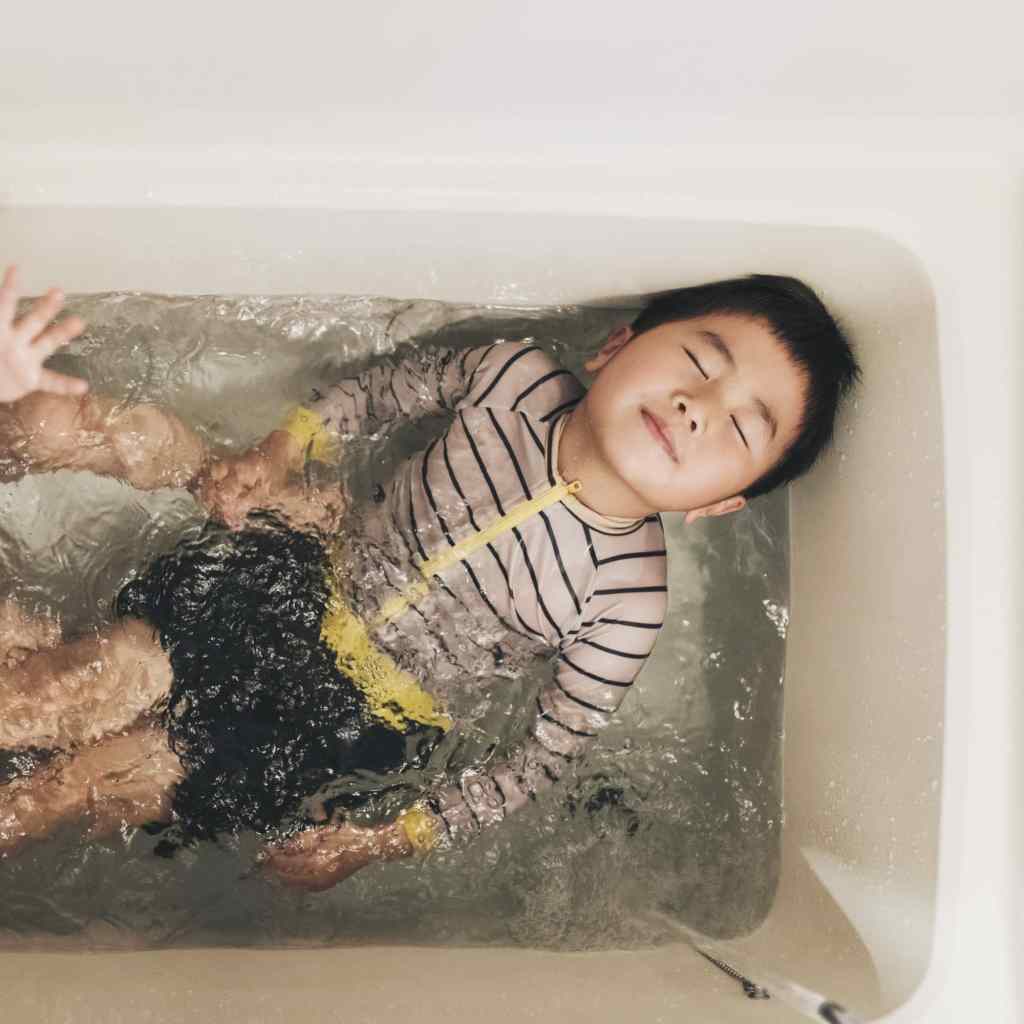Swimming is an important skill to have, so a lot of parents are eager to teach their kids how to swim as soon as possible. If you’re ready to jump in, but don’t have access to a pool, we have good news for you. While it might sound too good to be true, you actually do not need a pool to start teaching your children how to swim! From building a DIY pool using cost-efficient materials to fun exercises for kids of all ages, here are ways you can teach your kids how to swim without a pool.
Related: There's a Reason – Unrelated to Safety – Why Kids Should Learn to Swim Before Age 5
What can I use as an alternate swimming pool?
You may not have a pool in your backyard, but according to Finn Cardiff, CEO and founder of Beachgoer, there are many fun DIY alternatives you can use instead of a full-size swimming pool. “As long as you have a good spot for it, you can DIY a good alternative to a home pool from materials like recycled plastic, bales of hay, and sturdy ropes,” Cardiff told POPSUGAR. “It’s easy on the budget and can make a good training pool for your kids to learn how to swim.”
How can I teach my kids to swim without a pool?
Don’t worry – there are still ways you can teach your kids to swim without any kind of pool. All you need is a tub or shower! Chris DeJong, founder of Big Blue Swim School, suggests you try different exercises for different age groups to get your kids ready to take a plunge. It’s all about getting them comfortable with water at this point.
How do I start teaching my child to swim?
With babies, DeJong suggests you practice making balloon faces while pouring water from the back of their head to the front, and work on your baby’s grip strength by having them walk while holding onto a couch. He also suggests you help your baby float on their backs to feel comfortable with water around their ears.
“With infants, when children have a hard time putting their face in the water, start with a shower with running water from behind the head, and graduate to a shower with running water on the face,” DeJong tells POPSUGAR. “They can even wear goggles, and once comfortable can practice going under water in the bathtub.”
And for young children, DeJong suggests you practice blowing bubbles (blow for 3 seconds, take a quick, breath and then blow for 3 more seconds), practice kicking off the side of the bed or couch, and practice side breathing positioning standing up. “Then move to kicking and propulsion exercises. When your child’s more comfortable in the water, you can teach basic strokes,” says Cardiff.

